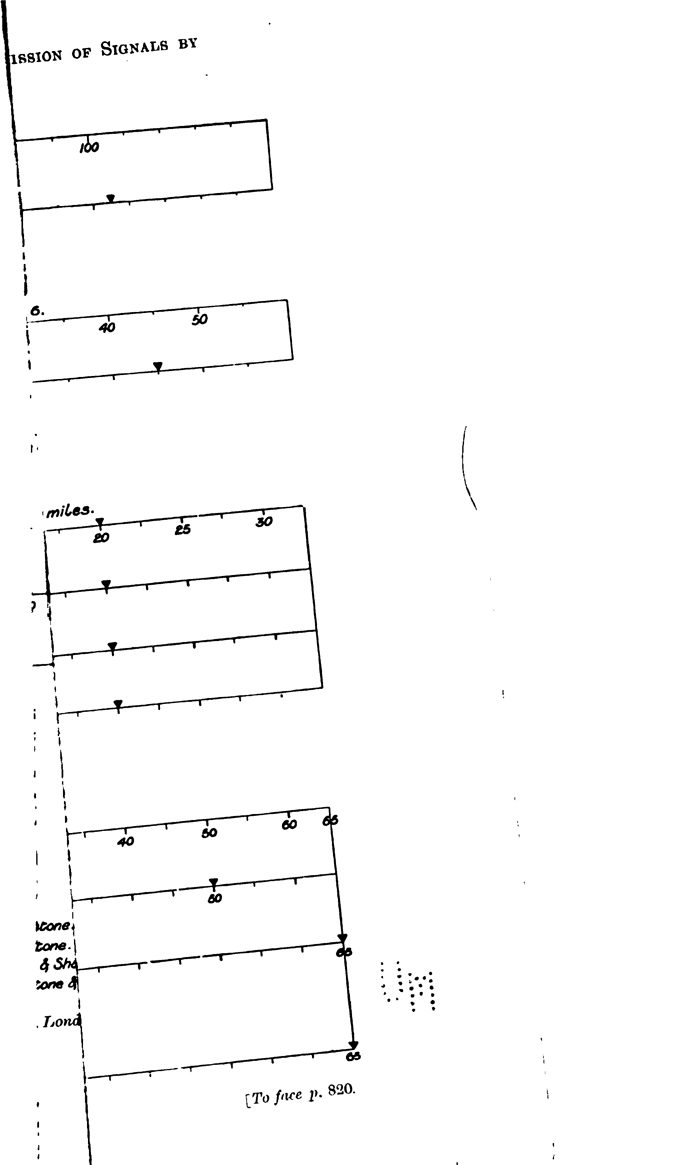bare and dry, with scrub

*
Plate VII.
Diagrams illustrating the results of observations by Admiral Sir Henry Jackson, R.N., F.R.S, on the Effect of the Interposition of Obstacles on Transmission of Signals by Electric Wave Telegraphy.
from Chapter 9, Radiotelegraphic Transmission, in J. A. Fleming, The Principles of Electric Wave Telegraphy and Telephony (Third edition, fully revised and extended), London, 1916
The (obscured) diagrams illustrate material detailed in Tables III and IV (here), showing maximum signal distance achieved by aerial wires at different heights (at sending and receiving ends), over land having various particulars (formation, strata, surface) — e.g.,
shale / pasture wet
sandstone and shale / ditto
porous sandstone / building, dry
porous coral sandstone / cultivated, wet
ditto, over limestone / ditto
—
gritstone and marl / bare and dry, with scrub
—
limestone and iron ores / cultivated, wet and dry
—
limestone and much iron ore / ditto, dry
sandstone / ditto
limestone. valleys between hills / ditto, wet and dry
limestone and iron ores / bare, wet and dry
ditto / ditto
The tables also specify percentage of maximum distance over land to over sea.
It is the idea of those waves, entangled in earthly particulars — bare and dry, with scrub — that is of interest here.
UM is University of Michigan. Digitized October 4, 2007.
4 December 2012
tags: bare and dry with scrub; particularities; waves; J. A. Fleming